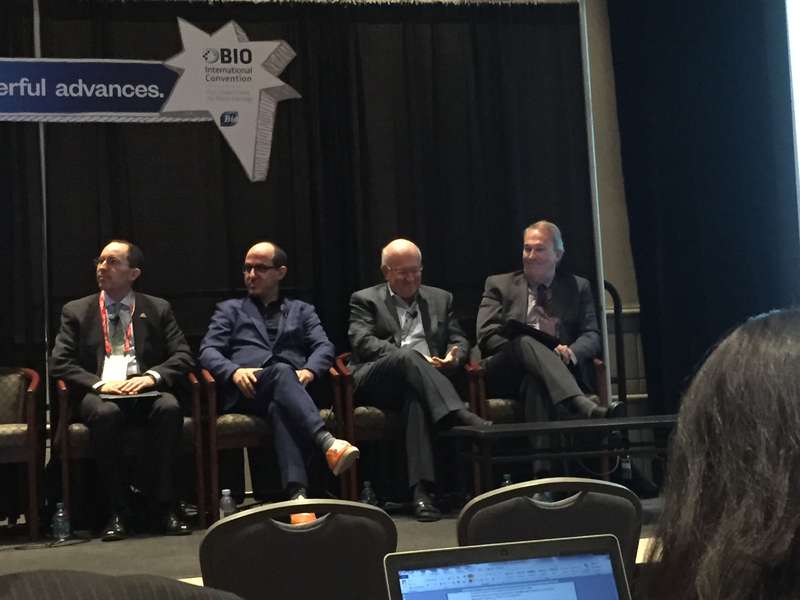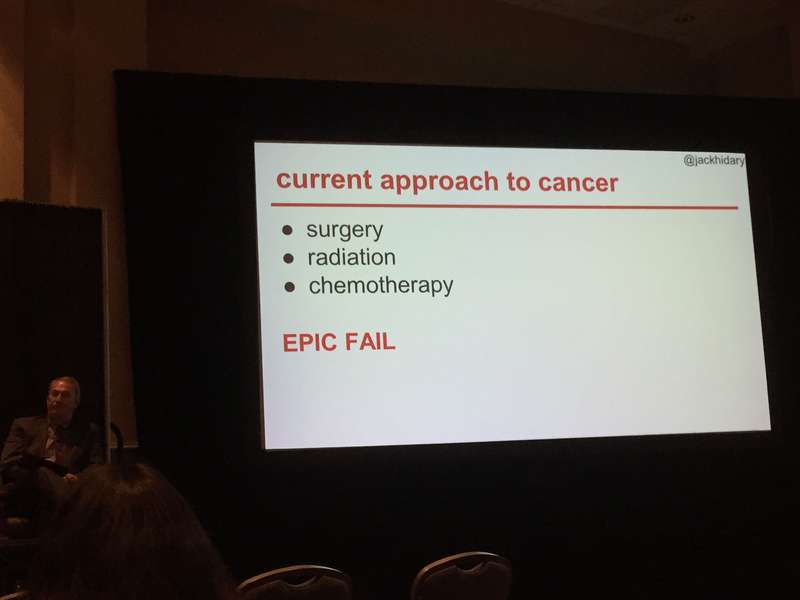BIO 2015: How the 'Internet of Everything' Will Impact Digital Health
 Programming for the 2015 BIO International Convention in Philadelphia was split into several educational tracks covering a diverse array of topics like Next-Generation Biotherapeutics, Food & Agriculture, and Digital Health.
Programming for the 2015 BIO International Convention in Philadelphia was split into several educational tracks covering a diverse array of topics like Next-Generation Biotherapeutics, Food & Agriculture, and Digital Health.
One session Bioscience Technology (BST) attended in the digital health area was titled “The Internet of Everything Meets Digital Health.” The panel analyzed how the proliferation of internet-connected communication devices, like smartphones and wearables, can generate challenges and opportunities for the future of the healthcare industry.
Sanjeev Wadhwa, a partner/leader from E&Y;’s Life Sciences R&D; and Collective Intent Health Innovations practice, served as the panel’s moderator where four speakers gave their unique insight and perspective on different facets of this field:
Digital Therapeutics for Mental Health
Brandon Staglin, the director of marketing communications at the One Mind Institute (IMHRO) in Rutherford, California and the Staglin Family Vineyard, kicked things off by discussing the role of digital therapeutics in helping treat neurological disorders.
Brandon was diagnosed with schizophrenia in 1990. He told the audience that he had felt like there was a battle being waged between heaven and hell over his soul. He was prescribed medication to manage his psychosis, but he had still undergone two psychotic breaks. He felt the drugs were not working and decided to pursue other alternatives.
In 1998, Brandon participated in a pilot study of cognitive training software for schizophrenia with Dr. Sophia Vinogradov, a professor of psychiatry at the University of California, San Francisco School of Medicine. The program was created based on the idea that mental exercises could heal some of the cognitive deficits caused by schizophrenia by strengthening a property of the brain called neuroplasticity.
Brandon explained he would play certain types of computer games for one hour five days a week, along with memorizing details from stories to help boost cognition. He added that this program played an integral role in his recovery and led to improvement in the overall quality of his life. Brandon expounded on the potential benefits of wearables and biosensors, saying these devices could help with closely monitoring thoughts and feelings, setting daily schedules, and helping with managing medication doses.
Oncology & Digital Health
Next up was Jack Hidary, a noted technology entrepreneur who serves as the chairman of Samba Energy, and is a board member of Google X and the Palo Alto Prize Foundation.
 He focused on the topic of “moonshots,” referencing the technologies Google X works on like self-driving cars. These technologies were once laughed off, according to Med City News, but are slowly becoming more mainstream.
He focused on the topic of “moonshots,” referencing the technologies Google X works on like self-driving cars. These technologies were once laughed off, according to Med City News, but are slowly becoming more mainstream.
Hidary then dove into the realm of oncology and digital health. He referred to the current approach to treating cancer with surgery, radiation, and chemotherapy as a “trifecta of really not good choices,” elaborating on how these therapies can wreak havoc on a patient’s body. Notably, he referenced the word EPIC FAIL in his presentation.
Instead, Hidary advocates for the combination of computational immunotherapy and genomics as a replacement for combating these diseases.
This data-driven approach calls for better modeling of the immune system to find new breakthroughs as well as have more companies conduct a larger genomic analysis of certain populations because the price of this technology has dropped over the years. The data collected from these studies would yield better insight into understanding the intricacies of how these pathogens are formed in the body.
Hidary told the crowd that “disruption has arrived.” There are a number of companies working on new tools that synthesize different genes and harness informatics to create new drugs. However, he noted these “moonshots” should never be discounted but added collaboration will be key to have these projects achieve their success.
READ MORE: BIO 2015: Three Intriguing Biotech Companies Featured at The Convention
Wireless Medicine
Essentially, Hidary’s discussion honed in on the growth and potential of various digital health tools, and Donald Jones built on that to help the audience understand how these big ideas can become widely adopted and implemented.
Donald is the chief executive officer of Trial Fusion, a company that helps a number of clients to safely navigate the commercialization process for digital health products by providing expert advice on design and partnerships along with providing clinical data, user experience feedback, and economic proof of the device’s capabilities to bring it to market. He also serves as the chief digital officer at the Scripps Translational Science Institute in La Jolla, California.
One of his primary points was advocating for the use of connected sensors as a valuable resource during clinical trials. Jones argued these gadgets should be viewed as “nodes on the net” or transmission hubs emitting important information from different sources to help researchers form a more comprehensive picture of a person’s illness.
Donald continued telling the crowd biosensors and wearables could be used in “unconventional ways,” and mentioned a project a team at Scripps worked on with Deepak Chopra, the well-known author and spiritualist.
The trial involved using sensors to measure the physiological effects of meditation. Researchers invited a total of 40 people between the ages of 20 and 72 to take part in this experiment through a weeklong retreat. Half the group consisted of experienced meditators whereas the remainder were new to the spiritual practice.
A wireless device monitored theparticipants’ vitals in real time during a 40-minute meditation session on the first day, and did the same on the last day.
MobiHealthNews explains the researchers “were generating so much data about each patient that Scripps began to think about physiological data in a new way. Rather than collecting and analyzing all the data, they adopted a model where they established norms for each patient, then looked only at the data outside the norm and searched for the reasons for those deviations.”
Jones used this as an example of how potent these sensors could be in a clinical setting but said the goal should be to figure out how to change behaviors to help physicians adopt these digital therapies.
Making “Moonshots” Real
Allen Lalonde, a senior executive at IBM Canada’s Research & Development Centre in Ontario, wrapped this session up.
He summarized the previous speaker’s points by highlighting technologies that are helping to bring these “moonshots” to life, such as cloud computing and social network. Allen emphasized the data these disruptive technologies produce can help with the evolution of the digital healthcare field.
However, he touched on how the term “big data” should mean “more data than we know what to do with.” Allen believes there needs to be a better infrastructure in place to collect and analyze this vast proliferation of information quickly and efficiently.





